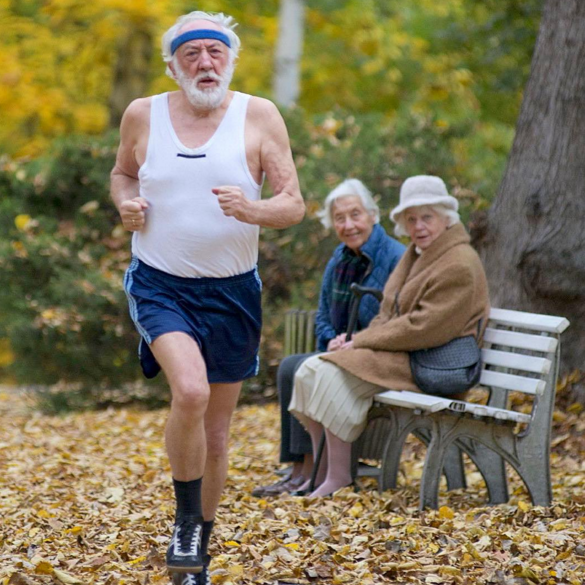Break Those Barriers To Exercise In Older Adults: Exercise Right Week 2019
There is no doubting the effect and the importance of exercise for us as we age. The physical, mental and social benefits involved are enormous in helping older adults maintain their independence and a high quality of life.
As we age, our muscles can decrease in size and strength, our balance can decrease, our flexibility can reduce and our cardiovascular fitness can decrease. As well as this, our cognitive function and memory can decline. However, we cannot use our age as an excuse for these things happening. All of these things can be improved or maintained by exercising regularly. Even with this in mind, some people still find exercise challenging to regularly partake in. There are many different barriers that older adults seem to have when it comes to participating in exercise, but here are 6 of the most common barriers and ways to overcome them.
1. Discomfort and Pain
You may experience joint pain, back pain or even chest pain with exercise, which may make you apprehensive about continuing to exercise. Excessive weight may also make it uncomfortable both physically and emotionally to participate in exercise and group classes.
Solution: Exercise can be a great way to actually alleviate specific types of pain. If you are having pain when exercising, it is recommended to visit an exercise physiologist so they can assess you and provide you with the exact type of exercise to do to avoid this pain or make it better. There are also many alternative options of exercise if you are finding one type is causing you pain. For example, sufferers of osteoarthritic pain often find they can manage their pain through exercising in water, with hydrotherapy and water aerobics activities. The warm water and low impact create a much more comfortable environment. It is also always important to know that no one should ever feel uncomfortable in choosing to participate to exercise. No matter what age, gender or size you are, people will admire and appreciate the time and effort you are putting in to look after your health.
2. Fear of Injury
You may be concerned about hurting yourself or having a nasty fall whilst you are exercising, which may put you off exercising altogether.
Solution: With the appropriate supervision and programming, exercise should always be a safe option for people of any age. If you are worried about injuring yourself whilst exercising, you should consult an exercise physiologist to prescribe you a safe and achievable program you can work from. It is important that if you are exercising for the first time in a while, that you take it slow and aim to gradually progress. Balance and strength training are also great in improving mobility and decreasing falls risk.
3. Expense and Accessibility
Gyms, classes and exercise equipment can be costly and hard to get to for those retired or on an aged pension.
Solution: There are many cheap or free options to consider when you are looking to exercise. Walking, bodyweight resistance exercise, playgrounds, use of furniture at home and free community exercise groups (walking groups, ParkRun) are all very accessible. Local community health centres also offer very cheap supervised exercise classes, as well as Medicare rebated allied health consultations, some of which can be bulk billed. Incidental exercise such as gardening, cleaning and walking around town also contribute to your overall physical activity levels.
4. Lack of Time
You may find you have people to care for, jobs or other commitments and don’t have enough time during the week to set aside for exercise.
Solution: Try to sit down and look through your weekly commitments. Work out how much time you have available to do things around those commitments, then aim to fit in at least 15-20 minutes of exercise a day or most days. Utilise incidental activity as much as possible – park further away from work, walk to the shops, gardening, take the stairs instead of the lift. Incorporate family and friends into your exercise – instead of going for coffee, go for a walk. Instead of drinking a few beers with mates, have a hit of golf/tennis. Small changes to these habits make a large difference to your overall energy expenditure.
5. Isolation
Older adults may find that they don’t have anyone to exercise with as they may have retired and relocated, lost their spouse or their partner is not able to exercise at the same intensity as them. This may decrease their motivation to exercise.
Solution: There are often walking groups run by local community centres or allied health clinics that anyone can join at a cheap price or free. Community health centres also offer supervised exercise classes, as do private allied health clinics. These are great places to meet like-minded people of a similar age striving towards the same goal. Practitioners such as exercise physiologists are also great people to help motivate you and create realistic goals for you to achieve.
6. Unsure Of What Exercise To Do
Often people are more than willing to exercise, but are unsure where to start and what exercise is best for them.
Solution: The best way to find out what type of exercise is best for you is by visiting an exercise physiologist! They will provide you with a thorough assessment of your physical capacity, then prescribe a specific exercise program for you, which will be reviewed and progressed regularly to keep you on track. There are also many apps that can assist you in choosing the correct exercise, including Daily Workouts Fitness Trainer.
If you are still struggling to overcome barriers to exercise and can’t quite the motivation to get out and get active, come see our exercise physiologist Jack for a comprehensive assessment and individualised exercise program today!

